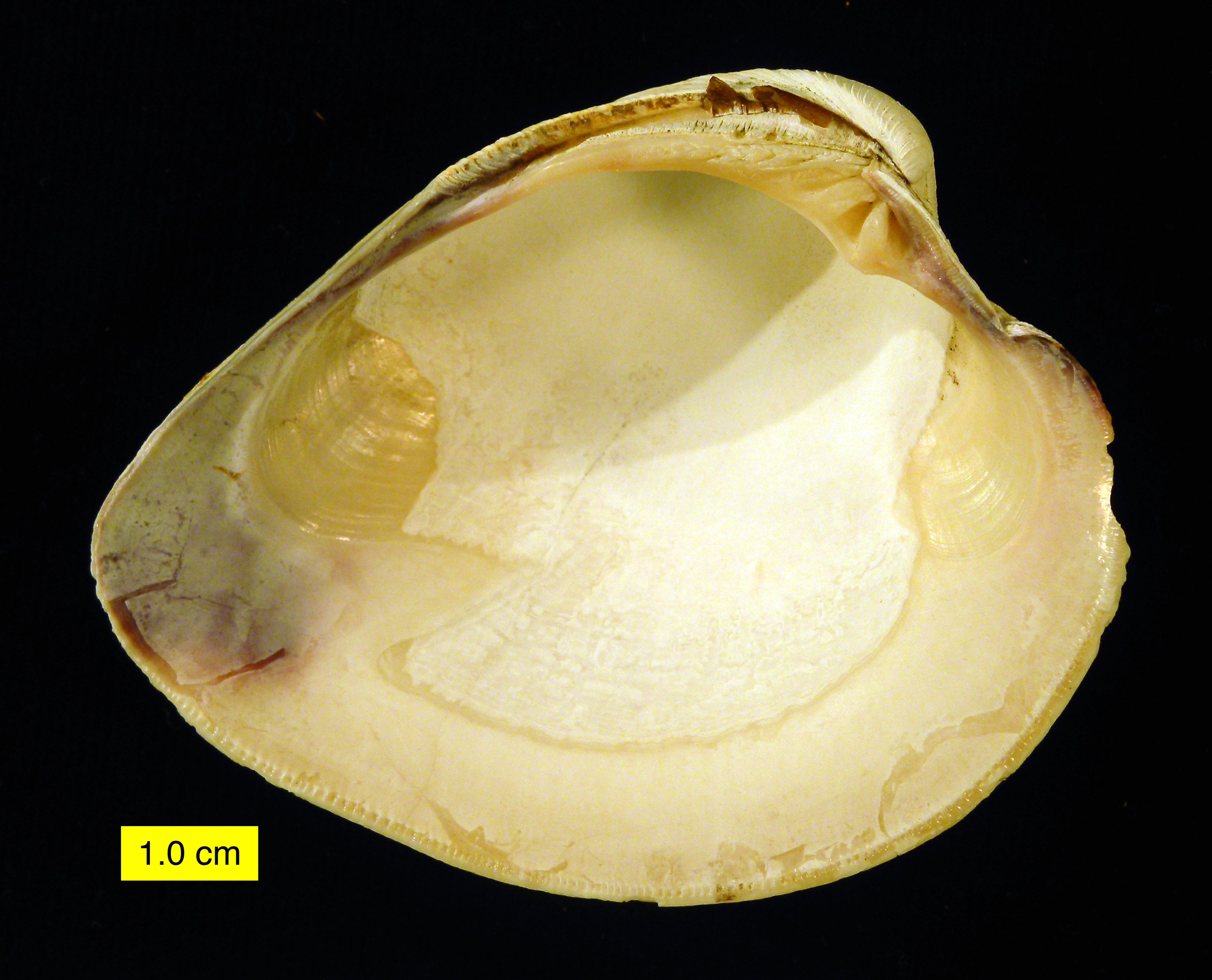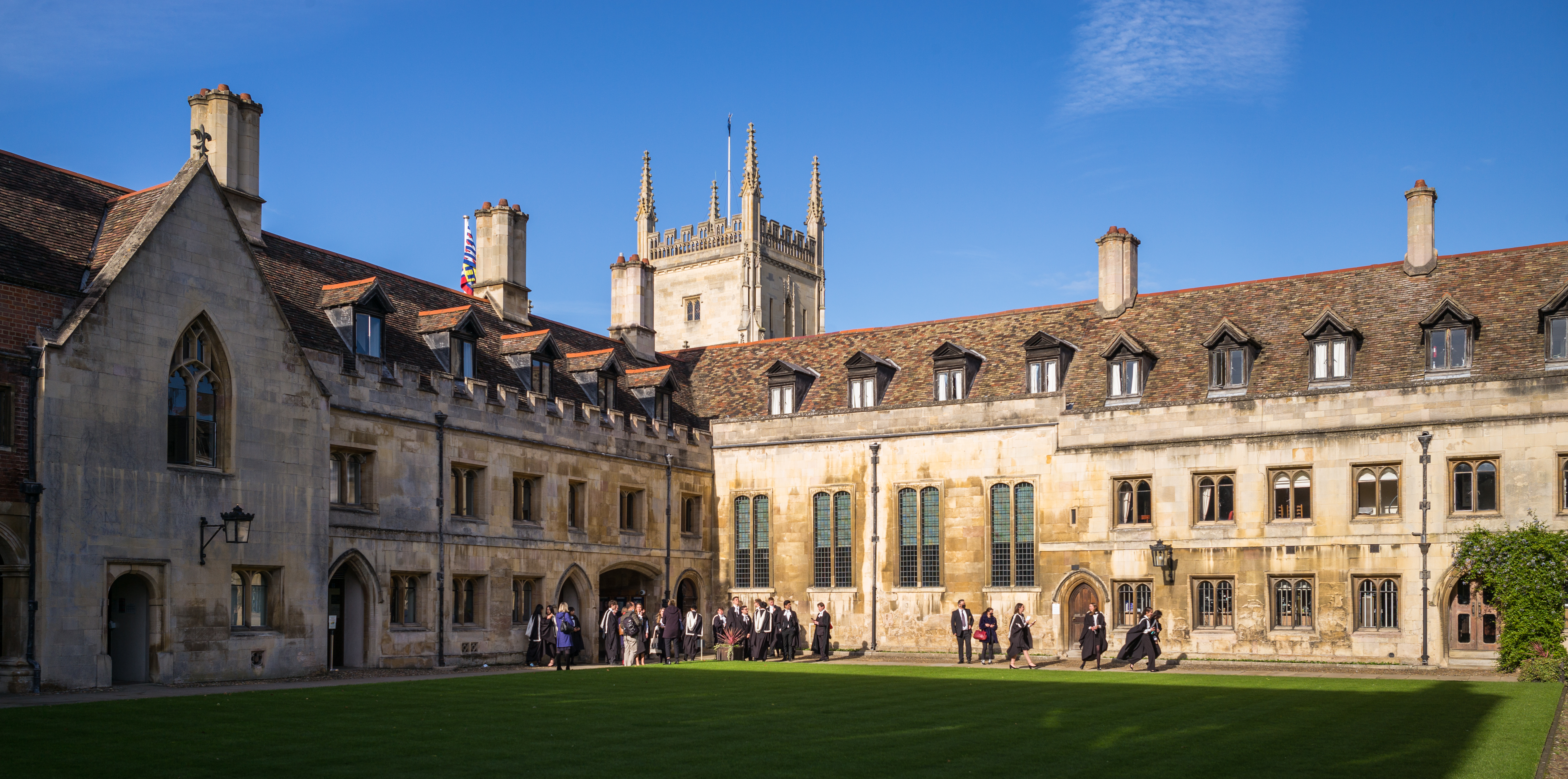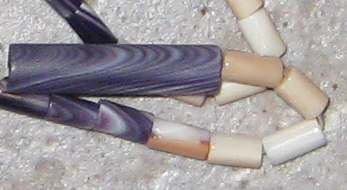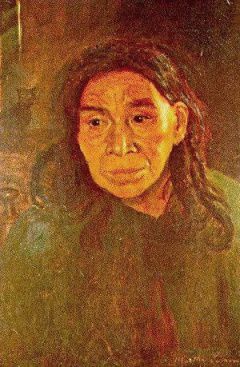|
Quahog
The hard clam (''Mercenaria mercenaria''), also known as the round clam, hard-shell (or hard-shelled) clam, or the quahog, is an edible marine bivalve mollusk that is native to the eastern shores of North America and Central America from Prince Edward Island to the Yucatán Peninsula. It is one of many unrelated edible bivalves that in the United States are frequently referred to simply as clams, as in the expression " clam digging". Older literature sources may use the systematic name ''Venus mercenaria''; this species is in the family Veneridae, the venus clams. Confusingly, the "ocean quahog" is a different species, '' Arctica islandica'', which, although superficially similar in shape, is in a different family of bivalves: it is rounder than the hard clam, usually has black periostracum, and there is no pallial sinus in the interior of the shell. Alternative names The hard clam has many alternative common names. It is also known as the Northern quahog, round clam, or chow ... [...More Info...] [...Related Items...] OR: [Wikipedia] [Google] [Baidu] |
Arctica Islandica
The ocean quahog (''Arctica islandica'') is a species of edible clam, a marine bivalve mollusk in the family Arcticidae. This species is native to the North Atlantic Ocean, and it is harvested commercially as a food source. This species is also known by a number of different common names, including Icelandic cyprine, mahogany clam, mahogany quahog, black quahog, and black clam. The typical ''Arctica islandica'' resembles the quahog, but the shell of the ocean quahog is rounder, the periostracum is usually black, and on the interior of the shell, the pallial line has no indentation, or sinus. Unlike the quahog, which lives intertidally and can be collected by clam digging, this species lives subtidally, and can only be collected by dredging. They grow to sizes exceeding 50 mm or two inches shell height. An individual specimen was reported to have lived 507 years, making it the longest-lived non-colonial metazoan whose age was accurately known. Life cycle and longevit ... [...More Info...] [...Related Items...] OR: [Wikipedia] [Google] [Baidu] |
Mercenaria
''Mercenaria'' is a genus of edible saltwater clams, marine bivalve molluscs in the family Veneridae, the Venus clams. The genus ''Mercenaria'' includes the quahogs, consisting of ''Mercenaria mercenaria'', the northern quahog or hard clam, and ''M. campechiensis'', the southern quahog. These two species commonly hybridise where their ranges overlap. Mercenaria mercenaria is further subdivided in the marketplace and thence in the kitchen by size: the largest being the quahog or chowder clam, then smaller cherrystones, and smallest littlenecks; some markets also differentiate top necks which are intermediate in size between cherrystones and littlenecks. The smaller clams are eaten raw throughout New England, New York, and New Jersey; the larger clams are more suited for cooking. Other species within the genus include the venus clam ''M. stimpsoni'' found in north Pacific waters. All these species were formerly placed in the related genus ''Venus''. Species The World Register ... [...More Info...] [...Related Items...] OR: [Wikipedia] [Google] [Baidu] |
Mercenaria081111
''Mercenaria'' is a genus of edible saltwater clams, marine bivalve molluscs in the family Veneridae, the Venus clams. The genus ''Mercenaria'' includes the quahogs, consisting of ''Mercenaria mercenaria'', the northern quahog or hard clam, and ''M. campechiensis'', the southern quahog. These two species commonly hybridise where their ranges overlap. Mercenaria mercenaria is further subdivided in the marketplace and thence in the kitchen by size: the largest being the quahog or chowder clam, then smaller cherrystones, and smallest littlenecks; some markets also differentiate top necks which are intermediate in size between cherrystones and littlenecks. The smaller clams are eaten raw throughout New England, New York, and New Jersey; the larger clams are more suited for cooking. Other species within the genus include the venus clam ''M. stimpsoni'' found in north Pacific waters. All these species were formerly placed in the related genus ''Venus''. Species The World Regis ... [...More Info...] [...Related Items...] OR: [Wikipedia] [Google] [Baidu] |
Roger Williams (theologian)
Roger Williams (21 September 1603between 27 January and 15 March 1683) was an English-born New England Puritan minister, theologian, and author who founded Providence Plantations, which became the Colony of Rhode Island and Providence Plantations and later the U.S. State of Rhode Island and Providence Plantations, now the State of Rhode Island. He was a staunch advocate for religious freedom, separation of church and state, and fair dealings with Native Americans. Williams was expelled by the Puritan leaders from the Massachusetts Bay Colony and established Providence Plantations in 1636 as a refuge offering what he termed "liberty of conscience". In 1638, he founded the First Baptist Church in America, in Providence. Williams studied the indigenous languages of New England and published the first book-length study of a native North American language in English. Early life Roger Williams was born in or near London between 1602 and 1606, with many historians citing 1603 as t ... [...More Info...] [...Related Items...] OR: [Wikipedia] [Google] [Baidu] |
Bivalve
Bivalvia (), in previous centuries referred to as the Lamellibranchiata and Pelecypoda, is a class (biology), class of marine and freshwater Mollusca, molluscs that have laterally compressed bodies enclosed by a shell consisting of two hinged parts. As a group, bivalves have no head and they lack some usual molluscan organs, like the radula and the odontophore. They include the clams, oysters, Cockle (bivalve), cockles, mussels, scallops, and numerous other family (biology), families that live in saltwater, as well as a number of families that live in freshwater. The majority are filter feeders. The gills have evolved into Ctenidium (mollusc), ctenidia, specialised organs for feeding and breathing. Most bivalves bury themselves in sediment, where they are relatively safe from predation. Others lie on the sea floor or attach themselves to rocks or other hard surfaces. Some bivalves, such as the scallops and file shells, can nekton, swim. The shipworms bore into wood, clay, or ... [...More Info...] [...Related Items...] OR: [Wikipedia] [Google] [Baidu] |
Wampum
Wampum is a traditional shell bead of the Eastern Woodlands tribes of Native Americans. It includes white shell beads hand-fashioned from the North Atlantic channeled whelk shell and white and purple beads made from the quahog or Western North Atlantic hard-shelled clam. In New York, wampum beads have been discovered dating before 1510.Dubin, Lois Sherr. ''North American Indian Jewelry and Adornment: From Prehistory to the Present''. New York: Harry N. Abrams, 1999: 170-171. . Before European contact, strings of wampum were used for storytelling, ceremonial gifts, and recording important treaties and historical events, such as the Two Row Wampum Treaty and the Hiawatha Belt. Wampum was also used by the northeastern Indigenous tribes as a means of exchange, strung together in lengths for convenience. The first colonists understood it as a currency and adopted it as such in trading with them. Eventually, the colonists applied their technologies to more efficiently produce wa ... [...More Info...] [...Related Items...] OR: [Wikipedia] [Google] [Baidu] |
Clam
Clam is a common name for several kinds of bivalve molluscs. The word is often applied only to those that are edible and live as infauna, spending most of their lives halfway buried in the sand of the seafloor or riverbeds. Clams have two shells of equal size connected by two adductor muscles and have a powerful burrowing foot. They live in both freshwater and marine environments; in salt water they prefer to burrow down into the mud and the turbidity of the water required varies with species and location; the greatest diversity of these is in North America. Clams in the culinary sense do not live attached to a substrate (whereas oysters and mussels do) and do not live near the bottom (whereas scallops do). In culinary usage, clams are commonly eaten marine bivalves, as in clam digging and the resulting soup, clam chowder. Many edible clams such as palourde clams are ovoid or triangular; however, razor clams have an elongated parallel-sided shell, suggesting an old-fashioned s ... [...More Info...] [...Related Items...] OR: [Wikipedia] [Google] [Baidu] |
New England
New England is a region comprising six states in the Northeastern United States: Connecticut, Maine, Massachusetts, New Hampshire, Rhode Island, and Vermont. It is bordered by the state of New York (state), New York to the west and by the Canadian provinces of New Brunswick to the northeast and Quebec to the north. The Atlantic Ocean is to the east and southeast, and Long Island Sound is to the southwest. Boston is New England's largest city, as well as the capital of Massachusetts. Greater Boston is the largest metropolitan area, with nearly a third of New England's population; this area includes Worcester, Massachusetts (the second-largest city in New England), Manchester, New Hampshire (the largest city in New Hampshire), and Providence, Rhode Island (the capital of and largest city in Rhode Island). In 1620, the Pilgrims (Plymouth Colony), Pilgrims, Puritan Separatists from England, established Plymouth Colony, the second successful English settlement in America, following ... [...More Info...] [...Related Items...] OR: [Wikipedia] [Google] [Baidu] |
Periostracum
The periostracum ( ) is a thin, organic coating (or "skin") that is the outermost layer of the shell of many shelled animals, including molluscs and brachiopods. Among molluscs, it is primarily seen in snails and clams, i.e. in gastropods and bivalves, but it is also found in cephalopods such as ''Allonautilus scrobiculatus''. The periostracum is an integral part of the shell, and it forms as the shell forms, along with the other shell layers. The periostracum is used to protect the organism from corrosion. The periostracum is visible as the outer layer of the shell of many molluscan species from terrestrial, freshwater, and marine habitats, and may be seen in land snails, river mussels, and other kinds of freshwater bivalves, as well as in many kinds of marine shelled molluscs. The word ''periostracum'' means "around the shell", meaning that the periostracum is wrapped around what is usually the more calcareous part of the shell. Technically, the calcareous part of the ... [...More Info...] [...Related Items...] OR: [Wikipedia] [Google] [Baidu] |
Narragansett Language
Narragansett is an Algonquian language formerly spoken in most of what is today Rhode Island by the Narragansett people. It was closely related to the other Algonquian languages of southern New England like Massachusett and Mohegan-Pequot. The earliest study of the language in English was by Roger Williams, founder of the Rhode Island colony, in his book '' A Key Into the Language of America'' (1643). Name The word ''Narragansett'' means, literally, "(People) of the Small Point." The "point" may be located on the Salt Pond in Washington County. ( Great Salt Pond Archeological District). History Traditionally the tribe spoke the Narragansett language, a member of the Algonquian language family. The language became almost entirely extinct during the centuries of European colonization in New England through cultural assimilation. The tribe has begun language revival efforts, based on early-20th-century books and manuscripts, and new teaching programs. The Narragansett spoke ... [...More Info...] [...Related Items...] OR: [Wikipedia] [Google] [Baidu] |
Clam Digging
Clam digging is a North American term for a common way to harvest clams (edible infaunal bivalve mollusks) from below the surface of the tidal sand flats or mud flats where they live. It is done both recreationally (for enjoyment or as a source of food) and commercially (as a source of income). Commercial digging in the U.S. and Canada is colloquially referred to as ''clamming'', and is done by a ''clammer''. Amateur clam digging is often done using a straight long-handled spading fork, or a spading shovel. Commercial clamming for quahog clams, and the larger surf clams (soup clams) is primarily done offshore, via mechanical dredging. To harvest cultivated clam beds, aquaculturalists often use a much smaller version (hand pulled) from the offshore dredge. Another form of commercial clamming is done from a flat-decked boat using a clamrake with a telescopic handle. The head of these rakes have long tines attached to a "basket-like" cage in which the clams are coll ... [...More Info...] [...Related Items...] OR: [Wikipedia] [Google] [Baidu] |
Veneridae
The Veneridae or venerids, common name: Venus clams, are a very large family of minute to large, saltwater clams, marine bivalve molluscs. Over 500 living species of venerid bivalves are known, most of which are edible, and many of which are exploited as food sources. Many of the most important edible species are commonly known (in the USA) simply as "clams". Venerids make up a significant proportion of the world fishery of edible bivalves. The family includes some species that are important commercially, such as (in the USA) the hard clam or quahog, ''Mercenaria mercenaria''. Taxonomy The classification within the family Veneridae has been controversial at least since the 1930s. Molecular approaches show that much of this traditional classification is unnatural. Some common species have been moved between genera (including genera in different subfamilies) because of repeated attempts to bring a more valid organization to the classification or taxonomy of the family, therefore ... [...More Info...] [...Related Items...] OR: [Wikipedia] [Google] [Baidu] |










